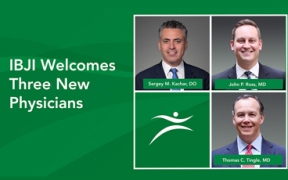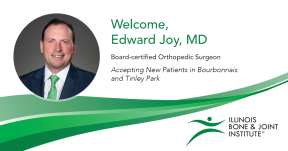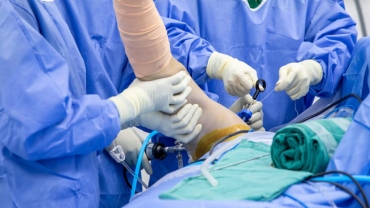You never know when or where an accident can happen. Last year in January 2019, Jose Diaz went to work on a snowy, icy day. Jose was chopping firewood at work when his accident occurred. Jose had worked at his job for awhile and was experienced in using the wood cutting machine. But on this cold, snowy day, the surrounding area of the axe became icy and slippery.
As Jose was reaching to pull the wood under the axe, his foot accidentally slipped and hit the pedal that activates the axe. In a matter of seconds, the axe came down while his hand was still underneath it, severing his hand at the wrist.
Luckily, Jose’s brother and nephew work with him and were able to step into action. They tied a belt around Jose’s arm to help stop the bleeding. They also put his hand on ice to try to save it in order to be reattached.
As Jose waited for the ambulance, he thought, “my life is over.” He thought about his family and kids, “I was worried because there was a lot of bleeding. I thought I wasn’t going to make it because of the amount of blood loss,” says Jose.
Jose arrived at the ER where he had his surgery with IBJI’s Taizoon Baxamusa, MD. Dr. Baxamusa reattached his left hand and wrist. Unfortunately, his hand started to fail after three days and he needed a second surgery to amputate it. Dr. Baxamusa amputated further up the arm, closer to the elbow in order to perform a Targeted Muscle Reinnervation (TMR). This procedure allowed Dr. Baxamusa to route Jose’s nerves in his forearm to targeted muscles near the skin to be able to control a myoelectric prosthesis in the future.
“A myoelectric prosthesis is powered by thoughts to move the prosthetic wrist and fingers as opposed to a traditional hook which would require his shoulder and elbow to power it,” says Dr. Baxamusa.
As Jose waited for the myoelectric prosthesis to be made, he began physical therapy and practiced using a traditional hook prosthesis. The hook prosthesis requires shoulder and elbow motion to power it. During his six months of physical therapy, they worked on loosening his shoulder and elbow muscles which were tight and hard to move.
The process of creating the myoelectric prosthesis can take some time. Jose worked with orthotists at Shirley Ryan Ability Lab (formerly Rehab Institute of Chicago) to construct his prosthesis. They measured his arm twice to make a mold. The mold has to be very tight because the cables need to accurately attach to the arm to work. They made three molds as Jose’s swelling went down. He practiced with each mold to see if anything needed to be changed before they made the final measurements.
Jose received his myoelectric prosthesis in January 2020 and started to practice and learn how to use it. While it still needs some finishing touches, Jose is feeling good about it. “I practice one-two hours a week. It feels good, it's heavier than my hand used to be but after awhile I don’t feel a difference.”
Jose planned to use the hook prosthesis while at work and practice with the myoelectric prosthesis at home. There are still some things he depends on his brother for at work that he can’t do but he says that he can do many of the things he used to do with his own hand. “I can do light work. I take my time to do things. I do things little by little, one day I’ll be able to do everything I did before.”
“In the beginning, I didn’t know what I was going to get. So I was thinking about how I was going to do my job. Before I could mow grass, use the blower and machines. I was hoping during surgery that my hand would stay, but it wasn’t going to work. So I started to think of my new life without the hand and I was motivated to keep going. Overall, now I feel good and that everything is going to be okay. I’m not thinking back anymore. I’m still learning. When I can’t do something right away or fast like before, I relax a bit and take my time and I can get it done, it just takes a little more time. Most of the time I do everything I want to do.”
“Thanks to the support of my family and friends—I feel they are the reason that I am doing so well after my life changing accident.”
Taizoon Baxamusa, MD, is a board-certified orthopedic surgeon with a subspecialty certification in hand surgery. He specializes in the treatment of hand conditions, including arthritis, nerve compression, fractures and lacerations.
For additional information about Targeted Muscle Reinnervation (TMR) procedure, visit:




